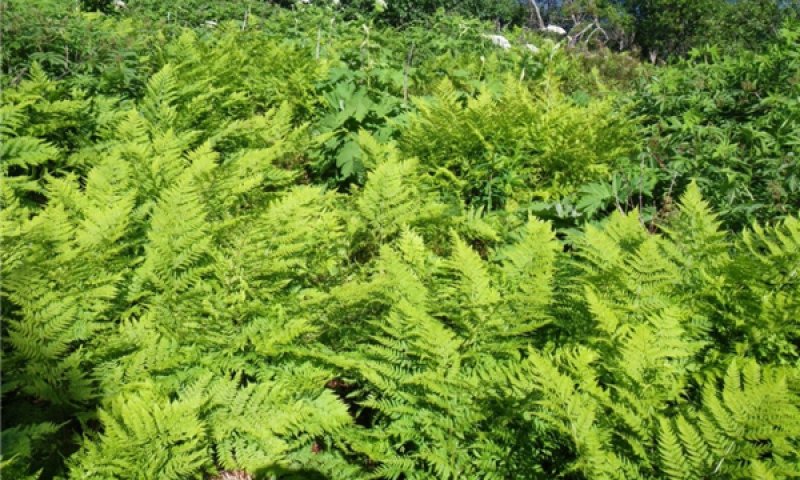

Natural Resources
Conservation Service
Ecological site F236XY117AK
Boreal Forest Wet Loamy Plain Drainageways
Last updated: 2/13/2024
Accessed: 12/21/2025
General information
Provisional. A provisional ecological site description has undergone quality control and quality assurance review. It contains a working state and transition model and enough information to identify the ecological site.

Figure 1. Mapped extent
Areas shown in blue indicate the maximum mapped extent of this ecological site. Other ecological sites likely occur within the highlighted areas. It is also possible for this ecological site to occur outside of highlighted areas if detailed soil survey has not been completed or recently updated.
MLRA notes
Major Land Resource Area (MLRA): 236X–Bristol Bay-Northern Alaska Peninsula Lowlands
The Bristol Bay-Northern Alaska Peninsula Lowland Major Land Resource Area (MLRA 236) is located in Western Alaska. This MLRA covers approximately 19,500 square miles and is defined by an expanse of nearly level to rolling lowlands, uplands and low to moderate hills bordered by long, mountain footslopes. Major rivers include the Egegik, Mulchatna, Naknek, Nushagak, and Wood River. MLRA 236 is in the zone of discontinuous permafrost. It is primarily in areas with finer textured soils on terraces, rolling uplands and footslopes. This MLRA was glaciated during the early to middle Pleistocene. Moraine and glaciofluvial deposits cover around sixty percent of the MLRA. Alluvium and coastal deposits make up a large portion of the remaining area (Kautz et al., 2012; USDA, 2006).
Climate patterns across this MLRA shift as one moves away from the coast. A maritime climate is prominent along the coast, while continental weather, commonly associated with Interior Alaska, is more influential inland. Across the MLRA, summers are general short and warm while winters are long and cold. Mean annual precipitation is 13 to 50 inches, with increased precipitation at higher elevations and areas away from the coast. Mean annual temperatures is between 30 and 36 degrees F (USDA, 2006).
The Bristol Bay-Northern Alaska Peninsula MLRA is principally undeveloped wilderness. Federally managed land includes parts of the Katmai and Aniakchak National Parks, and the Alaska Peninsula, Becharof, Togiak and Alaska Maritime National Wildlife Refuges. The MLRA is sparsely populated. Principal communities include Dillingham, Naknek, and King Salmon. Commercial fishing in Bristol Bay and the Bering Sea comprises a major part of economic activity in the MLRA. Other land uses include subsistence activities (fishing, hunting, and gathering) and sport hunting and fishing (USDA, 2006).
Ecological site concept
This site is in plain drainageways. Site elevation ranges from 30 to 720 feet above sea level. Slope gradients are strongly sloping to moderately steep. Soil and site hydrology shape the vegetation in this landform. Late snowpack increases water availability at the start of the growing season. Flood events are low energy and do not scour soil or vegetation. Soils are somewhat poorly drained with a water table throughout the year between 15 and 24 inches. Most vegetation is categorized as facultative to obligate wetland species.
The reference state supports three communities. The reference community phase is characterized by a mixed forest (Viereck et al., 1992). It is composed of a mix of white spruce (Picea glauca) and paper birch (Betula papyrifera) with an understory of forbs, medium shrubs, and abundant moss.
Associated sites
| F236XY115AK |
Boreal Forest Loamy Moist Slopes F236XY115AK is a forested site on plains and hill backslopes. This site is found in drainageways that dissect those plains. F236XY115AK is associated with well drained soils that lack a water table and do not flood. The resulting ecological dynamics and supported vegetation are different than this site. |
|---|---|
| F236XY152AK |
Boreal Forest Volcanic Loamy Swales F236XY152AK is found in swales on the same plains as the drainageways drainageways defined by this site. Site and soil hydrology result in different reference plant communities. |
| R236XY127AK |
Subarctic Sedge Peat Plain Depressions R236XY127AK describes concave dips on plains. It and this site are found on the same plains. Concave dips contain organic soils associated with a meadow reference plant community that is distinct from the forest found on plain drainageways. |
Similar sites
| F236XY116AK |
Boreal Forest Loamy Wet Slopes F236XY116AK is in linear to convex areas of boreal upland plains and hills. It and this site both support a mix of trees with a diverse understory of shrubs, forbs and graminoids. Differences in soil and site hydrology result in a reference community comprised of more hydrophytic species in this site. |
|---|
Table 1. Dominant plant species
| Tree |
(1) Picea glauca |
|---|---|
| Shrub |
(1) Salix pulchra |
| Herbaceous |
(1) Equisetum arvense |
Click on box and path labels to scroll to the respective text.
Ecosystem states
State 1 submodel, plant communities
| 1.1a | - | Seepage. |
|---|---|---|
| 1.2a | - | Natural succession: Normal time and growth without disruptive seepage. |
| 1.2b | - | Extended period of seepage. |
| 1.3a | - | Natural succession: Normal time and growth without disruptive seepage. |





